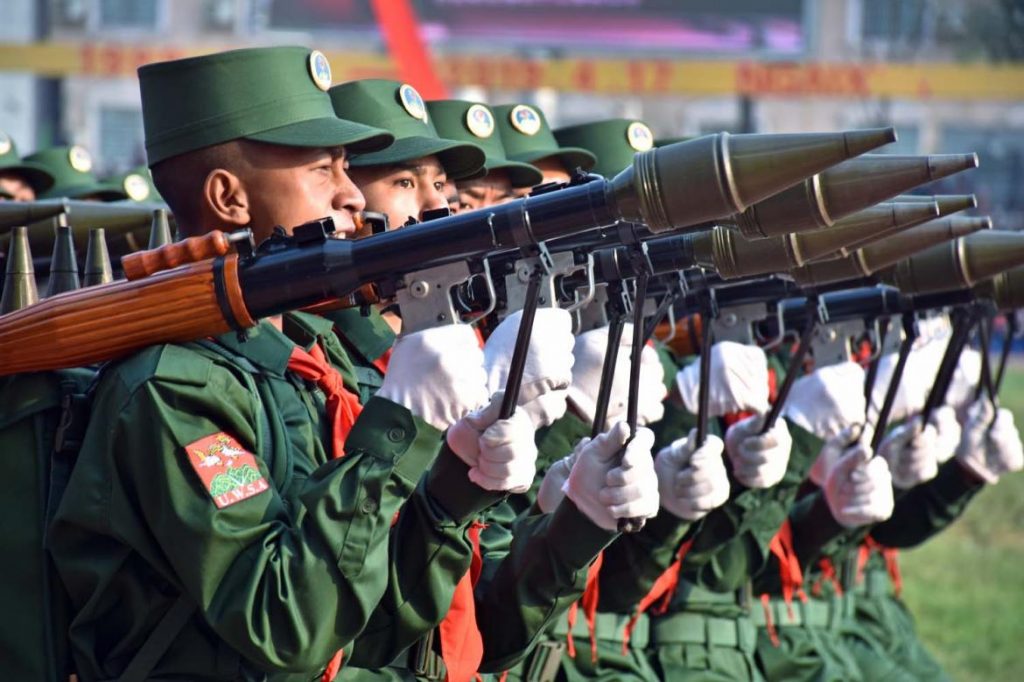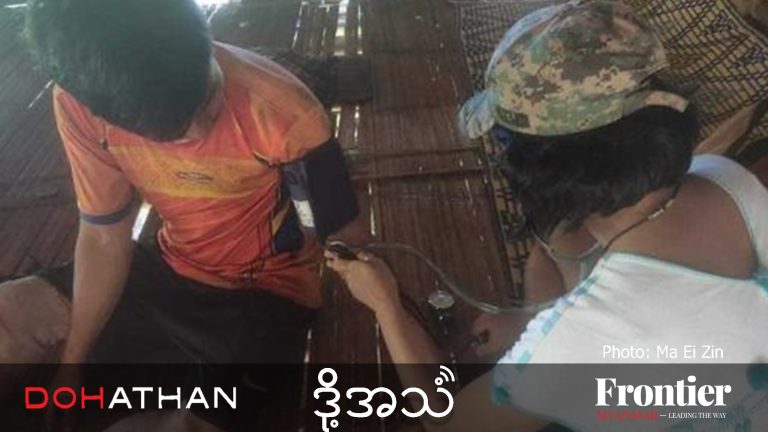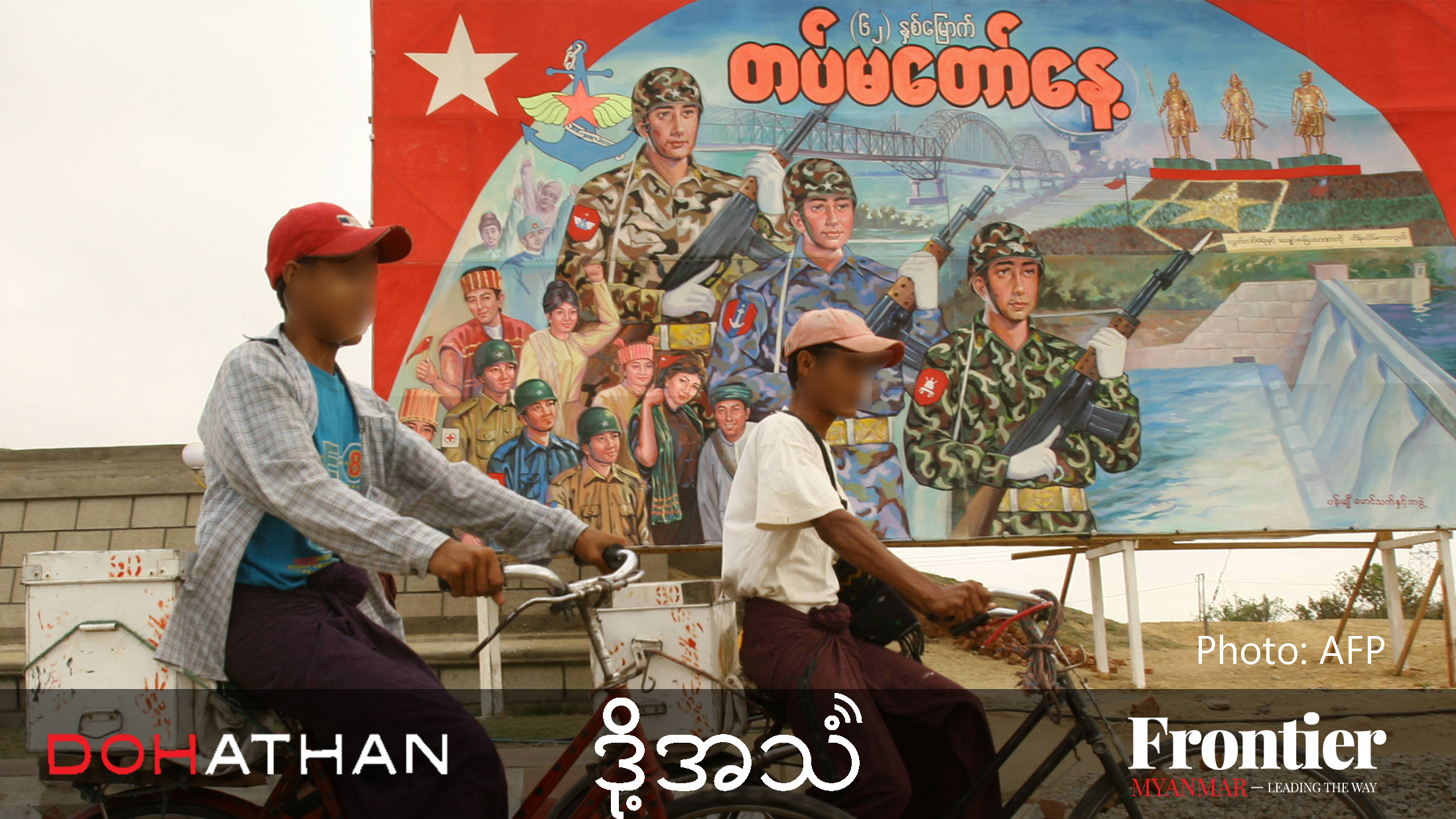The prolonged deadlock in political negotiations and a reduction in hostilities have “frozen” many of Myanmar’s conflicts, but the threat of renewed fighting remains very real.
By AUNG NAING OO | FRONTIER
The term “frozen conflict” is typically applied to situations where active fighting has been brought to an end, but no peace treaty has resolved the conflict. Most often, it is used to refer to conflicts involving post-Soviet states in regions such as Trans-Dniester in Moldova or Abkhazia in Georgia, where a de-facto state, largely unrecognised by the international community, has been established.
But as United Nations secretary-general Mr Antonio Guterres pointed out in remarks to the Security Council in 2017, the term can be misleading, because it suggests that the threat of armed conflict is over. “Until peace agreements are signed and implemented, the risk of renewed violence remains,” he noted.
This appears to be the case in Myanmar. Apart from Rakhine State, the conflicts are largely frozen, but they could also resume at any time. Two key factors are at play: the prolonged deadlock in political negotiations and a reduction in hostilities in most parts of the country.
Today there are few large-scale military threats to either the ethnic armed groups or the Tatmadaw. Despite the lack of a political settlement, ceasefires – both the Nationwide Ceasefire Agreement and bilateral deals – have been sustained to a large extent, and even in non-ceasefire areas there have been few clashes over the past year. Neither side seems eager to fight.
Support more independent journalism like this. Sign up to be a Frontier member.
Under the Framework for Political Dialogue agreed by parties to the NCA, Union Peace Conferences (known as the 21st Century Panglong) were supposed to take place every six months and result in a political settlement, the Union Accord. The most recent Panglong conference was held in July 2018. Despite some efforts on both sides to resume this critical forum for political dialogue, no discernible progress has been made.
There are also debates as to whether the 51 points agreed so far as part of the accord at the Panglong conferences should be made into law to demonstrate empirical progress, but any decision on this is continually deferred.
Meanwhile, the two most important signatories to the NCA – the Karen National Union and Restoration Council of Shan State – withdrew from the process in October 2018, citing the failure to meaningfully implement the agreement. They are yet to indicate when they will end their non-cooperation and rejoin. Some analysts say it is unlikely they will come back until the new government is installed in early 2021.
The government and Tatmadaw have pursued negotiations with non-signatories to the NCA in order to bring more parties into the political negotiations, but success has been largely elusive – in part because these groups do not see any visible advantage in negotiating with the government.
The Tatmadaw’s decision to scale back its attacks in northern Myanmar (and then announce a unilateral ceasefire) has created some space for negotiations towards bilateral ceasefires with groups such as the Kachin Independence Organisation, Ta’ang National Liberation Army, the Myanmar National Democratic Alliance Army and Arakan Army.
But the Tatmadaw’s move has made negotiations more difficult in other ways. These groups have always had the resources and manpower to fight, and now the military threat towards them has been removed through the unilateral ceasefire. If the ceasefire offer does not look attractive, they can continue negotiations but hold out on an agreement.
Under these conditions, the majority of ethnic armed groups can maintain the status quo in the areas that they control without having to make any concessions. One example is the Karenni National Progressive Party. A bilateral ceasefire signatory, it has expressed a willingness to sign the NCA, but has yet to match the willingness with the deed. This has created a frozen conflict-like situation in Kayah State.
But frozen conflicts are hardly new to Myanmar. The ceasefire with the United Wa State Army is 30 years old. No fighting is expected there and the Wa enjoy de facto independence, but at the same time there is no prospect for a political settlement. Similarly, there have been no clashes with the National Democratic Alliance Army, which controls another enclave on the border with China, and whose ceasefire is also three decades old.
Myanmar is also not unique. There are numerous conflicts around the world where a ceasefire has been reached, active conflict has effectively ended but there is no political settlement.
But the situation in Myanmar is much more dangerous than in Cyprus or Nagorno-Karabakh in Azerbaijan. Not only is there no political pact, the existing ceasefire arrangements are very fragile. In large areas of northern Myanmar there is only a unilateral truce. There are no rules as to how this particular ceasefire can be maintained, meaning fighting can reignite at any given time.
Even with those ethnic armed groups that have signed ceasefires, there is usually no clear demarcation of territory – a condition that contributes to allegations of ceasefire violations from all sides. There is also no third-party UN ceasefire monitoring as in Cyprus; in fact, for the most part there is no ceasefire monitoring at all. Even the official mechanism established under the NCA – the Joint Ceasefire Monitoring Committee – has been accused of failing to fulfill its role because of differences in how existing agreements are interpreted and fingerpointing over alleged violations.
Under these circumstances, the little trust that existed has largely dissipated. As I have written previously, there is evidence that some ethnic armed groups have continued to upgrade their combat readiness in case the existing ceasefires break down.
For political leaders, policymakers and peace proponents, these conflict dynamics should be of great concern. The risk of a return to active conflict in many parts of the country is real. The recent attempts by armed groups to strengthen their forces mean that the fighting, if it resumes, is likely to be fiercer than before, rupturing the already precarious ceasefire agreements that have been put in place.
The only way to break this dangerous dynamic is to encourage the KNU and RCSS to return to the negotiation table immediately so that the peace process can resume. At the same time, negotiations with the KIO and others groups from northern Myanmar should be clearly aimed towards a peaceful settlement of armed conflict in Myanmar, and not just establishing a fragile ceasefire that preserves the status quo.







